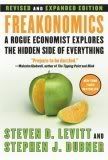The Linkfest Clause
Merry Christmas to one and all. We're an equal-opportunity blog, however, and would like to also extend a happy Hanukkah, Kwanzaa, Winter Solstice, and Festivus to you too! And have a joyous Boxing Day too.
My Experience As An HR Borrower
It is possible for a high risk borrower to get a loan on Prosper successfully. Don’t expect overnight money. This is a process that takes time, energy, patience, and the understanding that you are taking real money from real strangers. So many borrowers at Prosper default without ever making a payment that it is staggering. My Prosper payments have come first and carry more weight with me because they came from real people just like me and you that are looking to invest their money, get a return, and make a real difference in the lives of ordinary people.
Prosper Nominated for Crunchie Award
Prosper was nominated for a Crunchie in the category of Best Business Model.
The Crunchies is a collaboration project between GigaOm, Read/WriteWeb, VentureBeat, and TechCrunch.
USA Today: Peer to Peer Lending Hits Its Stride
As the global credit squeeze leads banks to tighten their lending, a niche industry is emerging as the eBay of consumer loans: peer-to-peer lenders.With peer-to-peer lending, individuals, some of them with little or no collateral, seek loans from ordinary people looking to lend. Lenders compete with each other to make loans, often resulting in lower rates for borrowers — averaging 10% to 16% — than are available on unsecured bank loans.
Business Wire: Will a Stranger Lend You $25,000?
Prosper, based in San Francisco, is one of a tiny but growing number of for-profit online social lending marketplaces in the U.S., which some entrepreneurs are looking to as alternatives to bank loans. (The original concept of making small loans available to people with no collateral in the developing world started in the 1970s and has been growing steadily more popular, sparking praise (BusinessWeek.com, 10/13/06), controversy (BusinessWeek.com, 12/13/07), and nonprofit successes like Kiva (BusinessWeek Small Biz, 7/31/06).) As the credit crunch (BusinessWeek Small Biz, October/November, 2007) makes getting a loan even harder for small business owners, for-profit social lending could play a bigger role in financing small enterprises in the U.S. Most sites reported that between 20% to 30% of loans are for businesses; it is the second most common reason borrowers listed, after refinancing debt.
NewWire Investor: A Look Back at Prosper’s Second Year
Prosper, the online lending company that began the peer-to-peer lending revolution in the U.S., will mark its second year of lending Feb. 21. Prosper’s unique take on lending was followed by Lending Club, CommunityLend, Smava and iGrin, among others. Like any new company, Prosper’s first year has seen significant changes to the business model and a lot of small tweaks to the system.
One of the most notable aspects of Prosper’s business model is its groups feature. Borrowers may join a single group based on a common interest such as nationality, local community, religious affiliation or an affinity for PCs over Macs. Groups have reputations based on how well their members’ loans have done and each member borrower can help or hurt that group’s reputation.
The Age: Internet subtracts banks from lending equation
The Internet is directly connecting investors and borrowers, letting them take banks out of the lending equation and put their money where their hearts and dreams are.
People have lent each other more than 100 million US dollars through Prosper.com since it launched in February of 2006 and the US website has partnered with SBI Holdings to expand into Japan.







No comments:
Post a Comment